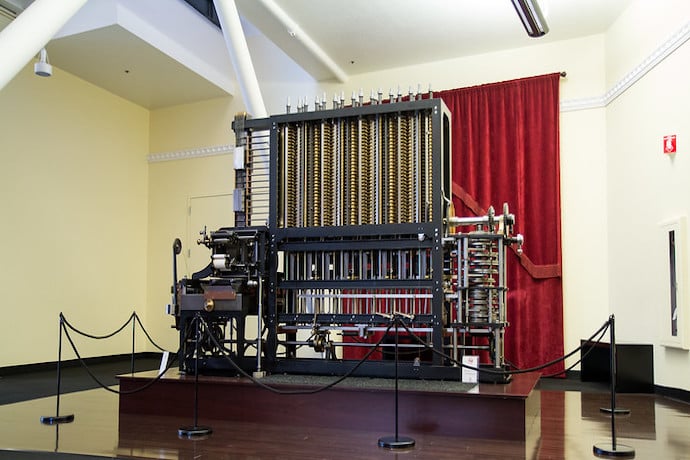There are a lot of people who helped invent what would become the computers we use today, but none are so interesting as British inventor Charles Babbage, who lived from 1791 to 1871. He was a very smart man, and invented things that we still use to this day, such as cow catchers on the front of trains.
However, some of his biggest “inventions” were the Difference Engine and the Analytical Engine. We say “inventions” because, unfortunately, Babbage never actually managed to build them. However, the theory behind each invention was very good, and helped inspire scientists to get computers to where they are today.
The Difference Engine was Babbage’s first thought that maybe, just maybe, we could stop counting on our fingers and instead let a machine do the work. He argued that humans doing math had the potential for errors to creep in, which was bad when said errors could mean people got hurt.
By making a machine do the work, there would be no errors, Babbage said. He was kind of right; after all, when was the last time your calculator got a sum wrong?
The Difference Engine was amazing for its time, as it had the means to “remember” numbers for future equations, much like how your calculator has a memory feature. Unfortunately, unlike your calculator, the Difference Engine didn’t fit in your pocket. In fact, it took up an entire room!
Eventually, Babbage couldn’t get the Difference Engine fully built, because his complex machine needed a lot of money. The UK government tried to help with funding, but Babbage eventually used up all the money they gave him.
Babbage didn’t mind so much, however, because he already had an idea for an even better machine. After construction work stopped on the Difference Engine in 1833, Babbage got to work on making the improved version, which he called the Analytical Engine.
The Analytical Engine was an amazing idea, because it used components that were very similar to our modern-day computers. It had a mill that would process equations (like our processors), a store to save information to (like hard drives and RAM), a reader for entering data via punch cards (like a keyboard) and a printer for spitting data out (like, well…our printers).
The machine was extremely ambitious for its time, and Babbage wanted the entire thing to run on steam power and with an attendant standing by. Yes, this was a computer before even electricity was used to power them!
The machine needed a lot of components, and Babbage needed money. However, the UK government was already upset that Babbage had used a lot of money to make the Difference Engine that was never completed, so they didn’t offer him money to make the Analytical Engine.
As such, Babbage’s designs for the Analytical Engine were forgotten about…all the way until 1937, 66 years after Babbage’s death, when people had the means to make Babbage’s ideas a reality, and the rest, as they say, was history.
Learn More
Charles Babbage
https://www.britannica.com/biography/Charles-Babbage
Analytical engine
https://www.britannica.com/technology/Analytical-Engine
Difference engine
https://www.britannica.com/technology/Difference-Engine
Pilot
https://en.wikipedia.org/wiki/Pilot_(locomotive)
Cowcatcher images
https://www.gettyimages.com/photos/cowcatcher?phrase=cowcatcher&sort=mostpopular
Cars and Cowcatchers (Animated video for young kids)
https://www.youtube.com/watch?v=byPpx8cGtlU
Charles Babbage
https://www.famousscientists.org/charles-babbage/

